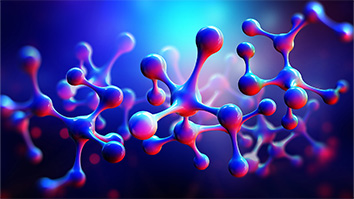Citation
Marohn, J. A.; Jaquith, M.; Yazdanian, S.; Chabinyc, M.; Ng, T. Comparing theory and hypotheses to electric force microscope data: are we thinking about injection, trapping, and transport correctly in organic electronic materials? 2007 MRS Spring Meeting; 2007 April 9-13; San Francisco; CA.
Abstract
In order to determine energetic disorders role in facilitating charge injection from gold into a molecularly doped polymer, we have examined the dependence of current on local electric field, measured using electric force microscopy (EFM), at temperatures ranging from 250 to 330 K. From these data we infer, for the first time in a single experiment, the temperature dependence of the main factors governing charge injection: the electric-field induced lowering of the image-potential barrier, the interfacial charge density, and the mobility. In this system, the Schottky effect is anomolously large, and the interfacial charge density is larger than expected and strikingly non-Arhennius.
Our analysis indicates that these effects are all a consequence of the Gaussian density of states in the organic. We have also used EFM to study charge trapping in as-deposited polycrystalline pentacene. In films with comparatively large grains, EFM images reveal that charges trap primarily at grains near the pentacene-metal interface. By contrast, in films with small grains, EFM images show that long-lived holes traps are dispersed throughout the film. These traps, however, do not appear to be associated with grain boundaries, as is often assumed. We find that charge traps require 100s of milliseconds to form, implying that traps do not form instantaneously by the emptying of levels but instead arise from a reaction having finite activation energy.
These experiments show that a new, improved microscopic view of charge injection and trapping can be gained by making scanned probe measurements of local electrostatic potential and capacitance. It would therefore be exciting if a local measurement of carrier mobility or diffusion constant could also be made. We have recently shown that low-spring-constant cantilevers can be used to observe electric field fluctuations arising from thermal dielectric fluctuations in polymers. In this talk we will show that ultrasensitive cantilevers can likewise measure the local charge diffusion constant via the effect of the associated electric field fluctuations on cantilever frequency and ringdown time. Analytical scaling laws and numerical simulations of the electric field power spectrum resulting from the thermal motion of holes in a N,N’-diphenyl-N-N’-bis(3-methylphenyl)-(1,1′-biphenyl)-4,4′-diamine (TPD) / polystyrene field effect transistor suggest that the local hole diffusion constant can be inferred in this system from measurements of cantilever frequency and ringdown time as a function of tip height and charge density. Progress towards directly testing the Einstein relation by comparing the locally measured charge diffusion constant to the bulk field effect transistor mobility will be reported.


